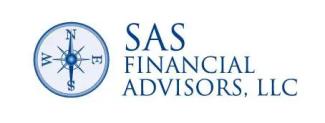Election results and the Markets: A big week during a big year
The Presidential election 2020, held last week, left the country with many questions and a result. This week, a very big week, in the midst of a very big year, the SAS newsletter covers end of year tax planning considerations, election results, and market responses.
End of Year Planning Considerations
There are two important dates for taxes: tax day in April and December 31st. As we approach the end of the calendar year, there are areas of financial planning worth reviewing to best anticipate your tax planning needs which may include:
- charitable giving which may include establishing a Donor Advised Fund
- capital gains harvesting
- prepaying any expenses
Please connect with the SAS team to schedule a virtual Zoom meeting to review your end of year financial planning:
Current Events
This is a big week in a year of big weeks. Head spinning events and living a life of suspended animation is definitely getting old. One big question has been resolved this weekend. We have a President-elect Joe Biden and Vice President-elect Kamala Harris. Another big event is announced; positive results from a Covid-19 vaccine study. The winds of change are blowing! New cases of Covid-19 however, are exploding. Fortunately, we in the SF Bay area are doing better than the nation and even CA in general is performing better than the rest of the country.
More and more Americans know someone who has been infected yet at the same time pandemic fatigue is weighing heavy on the majority of Americans. A new administration is already changing the tone of leadership to rally Americans to modify behavior that has proven to suppress the spread of Covid-19 mask wearing, social distancing, hand washing, avoiding large crowds, more especially indoors-in order to move towards life returning to the new normal.
Election
One interesting statistic generated by election results is the Associated Press did a study to determine the US counties with the highest rates of infection and how they voted. President Trump won in 93% of those high infection rate counties!
We ask how is this possible? In neighborhoods of America where more citizens are being infected and they know relatives of friends who have been infected or even died would voters vote their approval of President Trump’s administration’s response to the pandemic? This would not be the first time Americans voted against their own interest; coming to a better understanding of this puzzling behavior is important. This article in the Atlantic this month sheds a bit of light on this behavior.
Many voters looked beyond President Trump’s leadership in regard to the pandemic when casting their vote for him. Did President Trump’s rhetoric turn out to be what many Americans wanted to hear: ’we are turning a corner,’ ‘open the economy,’ ‘don’t believe the scientists.’ ‘don’t fear the virus,’ ‘don’t let it control you,’ ‘they want to defeat me,’? Or did his rhetoric further amplify an already existing, overly optimistic tone regarding the virus, and overall echo chamber for some Americans and his supporters? Many questions remain from the 2020 election given the electoral result which, similar to the 2016 electoral results, again defied many of the pollsters leading up to the election that predicted far wider margins of victory for President-elect Joe Biden.
We are in the midst of an administration and political party transition. It is a vulnerable period for our country. Next week we hope to say the President-elect is moving to the transition with the cooperation of the current administration. We shall see.
Markets
Markets are reacting minute by minute to developments. Stocks reach new intraday highs on Monday with the combination of a vaccine and a decided election. Majority of the Senate remains up in the air with two senate seats in a runoff in GA scheduled for January. The accepted rule is: markets like divided government because paralysis in government is more likely. We shall see.
Interest rates have moved to multi-month highs with 10 year US Treasuries near 1%. There is no doubt that the promise of low interest rates until 2023 is fueling asset price appreciation. With fiscal help around the corner, probably including more stimulus checks sent to Americans, as well as fiscal assistance to states and municipalities all for the goal of preventing a double dip recession, there will be continued money flowing into spending, assets, and savings. One interesting short term trend is the rotation in the stock market from technology, the favored five, to value stocks. Will it last?
EpiMacro
Another interesting article from the WSJ talks about a new area of study combining epidemiology and economics - EpiMacro. This new area of study recognizes the strategic and important relationship between public health and economics. The bottom line of the studies is not a surprise: “Countries that minimized the human cost of the pandemic tend also to have suffered lower economic costs.” Although often presented as competing goals they are closely aligned.
“Among some preliminary policy suggestions from this crossover field: Improve sick pay to incentivize compliance with quarantine orders; consider focusing lock downs on sectors of the economy with a high risk of spreading the contagion while allowing others to operate more or less as normal; and test for the virus as widely as possible. The third suggestion is already catching on, with countries including China and the U.K. testing whole cities for the virus and tiny Slovakia testing its entire adult population.”President-elect Biden includes some of these ideas in his proposals to fight the pandemic. A vaccine and smarter strategies can lead the path where feasible and aid by the federal government could allow us to see light at the end of the tunnel.

